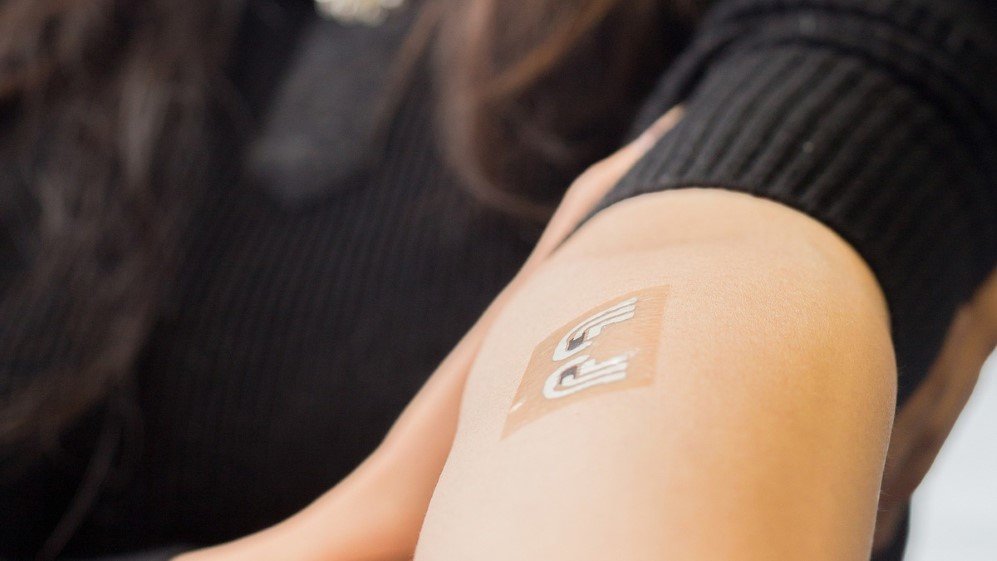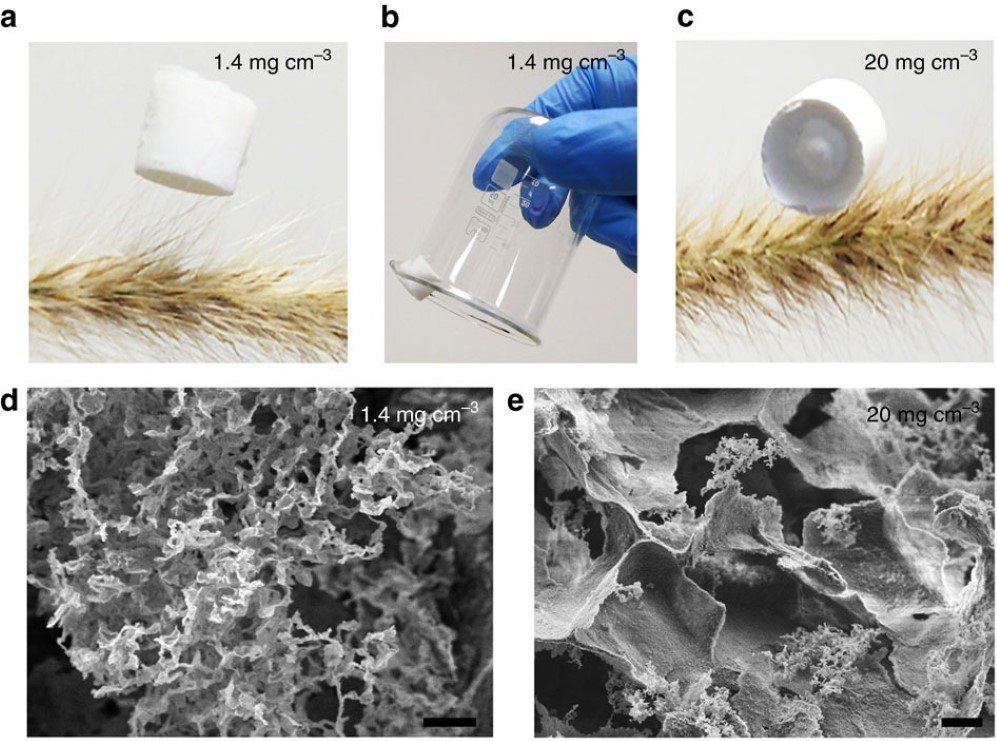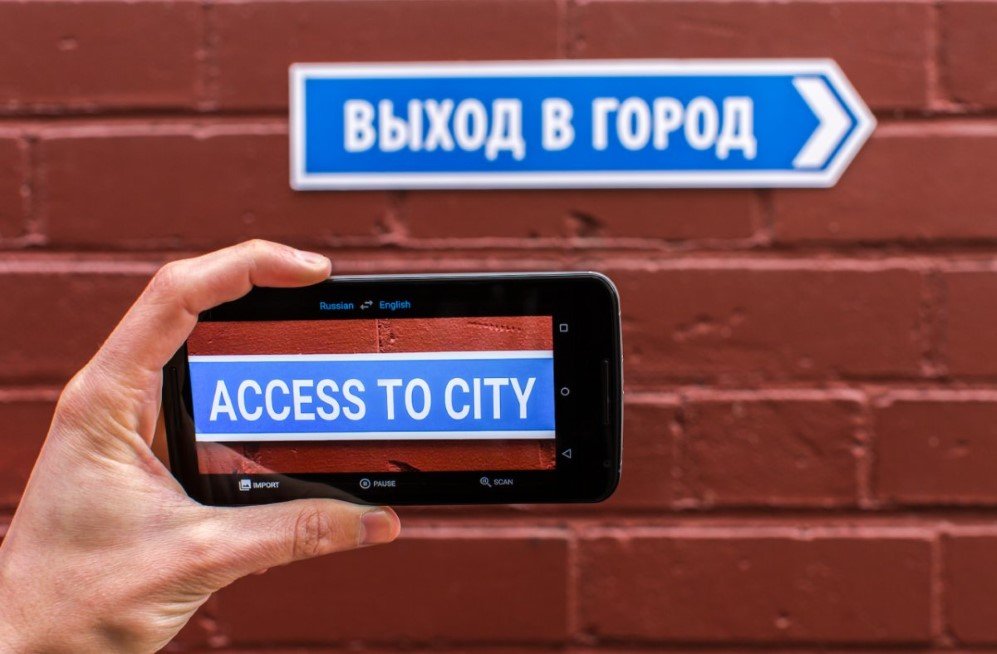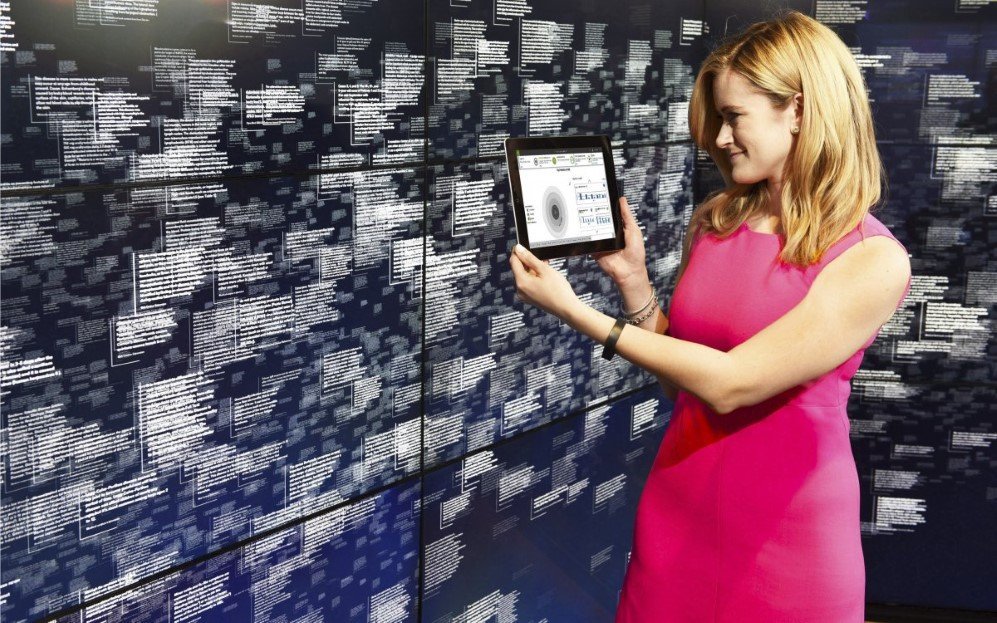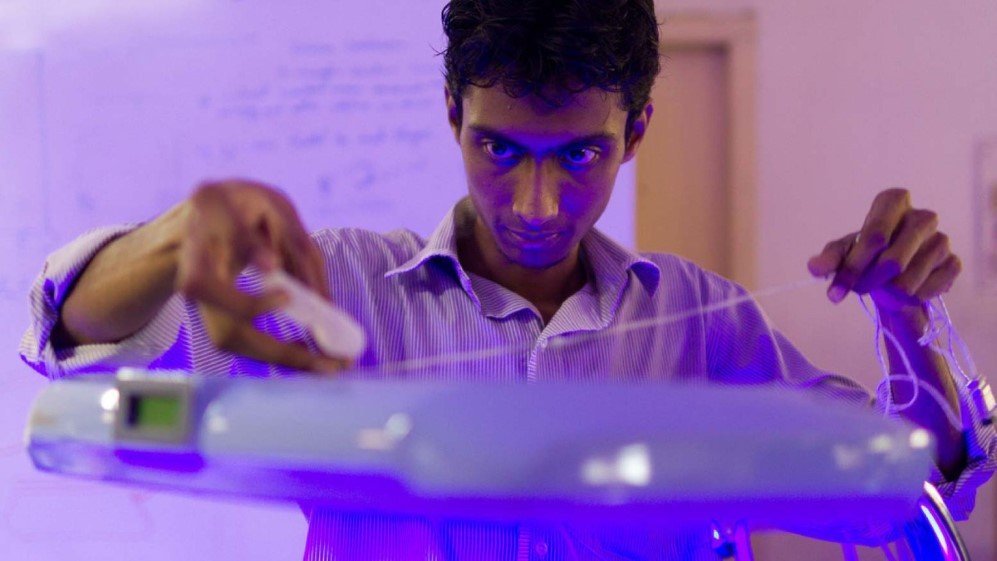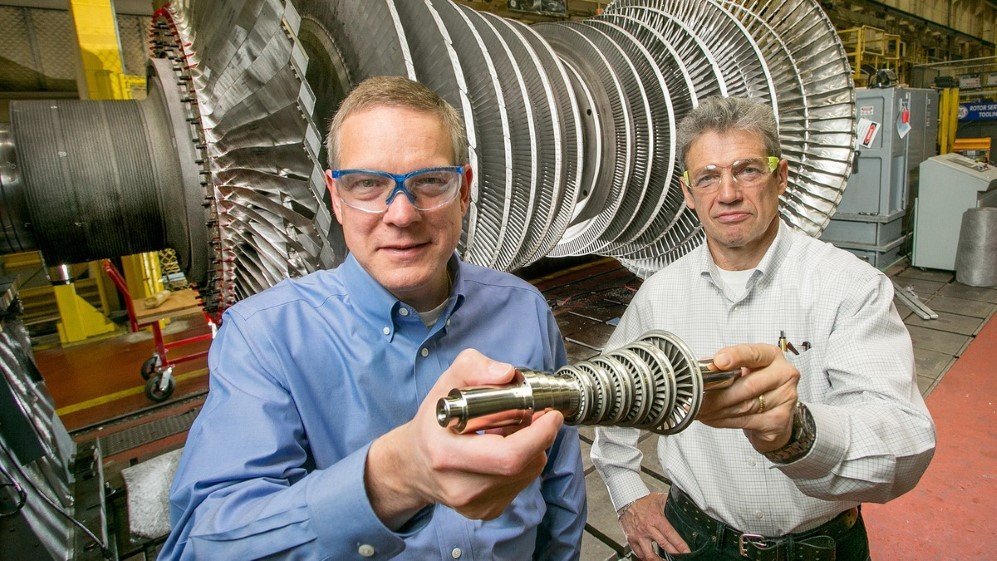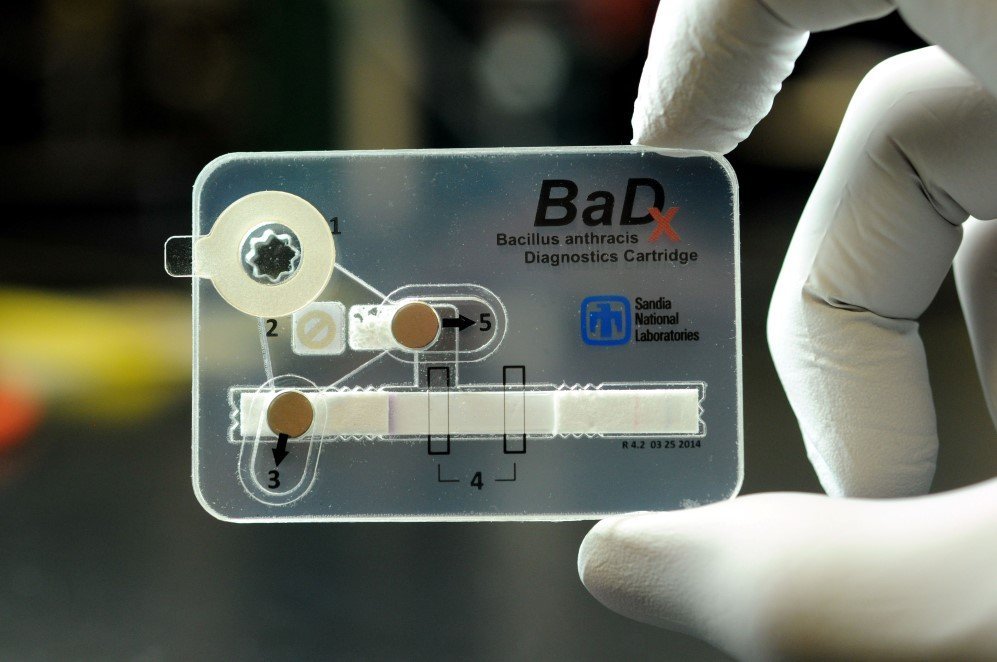30 Incredible Innovations that Made A Difference in 2015

The year 2015 was filled with revolutionary ideas and incredible innovations that made a significant impact in tackling the most pressing issues the world had seen lately. Several inventions kept coming throughout the year which actually gave us hope for the future.
Here at Rumblerum, we have compiled a list of 30 incredible innovations that actually made a difference in 2015. Out of 30, most of the innovations are centered on the idea of saving human lives and improving the quality of life for the living ones.
Reading all that we have got for you down under, will have your faith restored in humanity and make you feel proud of the innovators who worked relentlessly throughout the year in making life easier for the impaired and deprived ones.
Contents
1. Omni Processor: A Machine That Converts Human Waste Into Clean Drinking Water
In 2015, approximately 2.4 billion people around the world lacked basic facilities of safe sanitation while more than 660 million people were forced to utilize unhealthy and polluted drinking water sources.
In order to find a solution for these problems, The Gates Foundation turned to its engineers to use technology for improving the quality of human life in under-developed regions of the world. Peter Janicki, CEO of Janicki Bioenergy, developed a machine called ‘The Janicki Omni Processor’, which converts sewer sludge into clean drinking water, electricity and pathogen-free ash.
The machine dries the waste material and then burns it, creating steam that powers an engine that creates electricity. Meanwhile, the water removed from the sludge is filtered, creating clean water. The Omni Processor is already being tested in Dakar, Senegal in a pilot project, and is slated to convert 14 tons of sewage into electricity and drinkable water each day.
2. Nike FLYEASE: Sneakers Designed For People With Disabilities
Nike developed a new line of footwear that will allow people with disabilities to put-on or take-off their shoes without anybody’s help. The Nike FLYEASE has an exceptional story behind its development: In 2012, Matthew Walzer, who has cerebral palsy, wrote a letter to Nike asking the company to create sneakers that people with disabilities could easily put on and take off without the help of others.
In response to his letter, Nike’s senior director of athlete innovation, Tobie Hatfield, worked to develop a sneaker that has a zipper extending around the back of the shoe. The zipper would allow people with movement disorders, stroke victims and amputees, to “peel” it open with one hand and slide the foot in easily, saving them from their incredibly difficult exercise of tying shoe laces.
3. Plantalámparas: Plant Powered Lamps
According to Peru’s latest National Household Survey conducted by the National Institute of Statistics and Information, approximately 42% of rural areas in the Peruvian jungle don’t have electricity.
Known for developing innovative technologies, The Universidad de Ingeniería y Tecnología (UTEC) took up the task of providing electricity at remote locations through its novel invention called Plantalámparas — a lamp that runs on plant power and lights.
As plant’s waste decomposes in the soil during photosynthesis, electrons are produced as a result of oxidation process. The UTEC team captured these electrons by using electrodes in the soil and storing them in batteries. This process can light the LED bulbs for up to two hours.
4. Prosthetic Hand That Can Generate A Sense Of Touch
DARPA’s latest version of prosthetic hand uses neurotechnology that will allow its wearers to regain their sense of touch. Researchers at the Applied Physics Laboratory (APL) of Johns Hopkins University, wired a 28-year-old man’s prosthetic directly to his brain using electrodes on his sensory cortex and motor cortex. He became the first person to be able to “feel” physical sensation through a prosthetic hand or to have a ‘Near-Natural Sense of Touch’ as stated by DARPA.
Image: DARPA
5. VetiGel: An Algae-Based Gel That Stops Bleeding In Seconds.
Developed by Biotech Company Suneris, VetiGel is an algae-based gel that can stop bleeding in just 12 seconds, quickly seals wounds and stops traumatic bleeding. VetiGel is made from fibers that are found in everyday algae plant. The fibers link together like LEGO blocks within seconds, forming a leak-proof seal and stopping the bleeding process. VetiGel doesn’t cause clots and it integrates over time into the damaged tissue, so it does not need to be removed.
Interestingly, Joe Landolina, Suneris’ CEO, was just 17 when he invented VetiGel. Five years later, Suneris is about to ship its first batch.
Image: Suneris
6. Flow Hive: Honey on Tap
Two Aussie inventors created the Flow Hive beehive, which allows beekeepers to get honey on tap without opening the beehive or disturbing the bees.
The Flow Hive beehive’s frames consist of partially formed honeycomb cells, which lets the bees complete the comb with their wax before filling the cells with honey. Beekeepers then only need to turn a handle to split the cells vertically, so the honey can drip down to the base of the frame and out of the hive.
The Flow Hive also has a clear window which can help scientific researchers to conduct study without disturbing the bees as one can clearly see them through the window.
7. Temporary Tattoo Offers Needle-Free Way to Monitor Glucose Levels
If you are diabetic, then you certainly know the pain of pricking needles to check your blood sugar levels and that too for multiple times a day. But thanks to Nano engineers at the University of California, San Diego who have developed a temporary tattoo that offers needle-free way to monitor glucose levels.
The Temporary Tattoo is a flexible easy to wear device that both extracts and measures the level of glucose in the fluid in between skin cells. At the moment, the tattoo doesn’t provide the kind of numerical readout that a patient would need to monitor his/her own glucose but the engineers say it will eventually have Bluetooth capabilities to send information directly to the patient’s doctor in real-time or store data in the cloud.
IMAGE: UC SAN DIEGO CENTER FOR WEARABLE SENSORS
8. Be My Eyes: An App That Helps Blind People To See Through Others’ Eyes
Be My Eyes is an iPhone app developed by the Danish Blind Society that connects visually impaired users to sighted volunteers via live video feed. A blind person requests assistance in the Be My Eyes app. The volunteer helper receives a notification for help and a live video connection is established. From the live video the volunteer can help the blind person in understanding unfamiliar street signs, reading expiration dates on food packages, or anything else that needs a quick visual assist.
According to its website, the app has helped more than 115,000 blind users so far.
9. Eargo: The Most Comfortable Hearing Aid
Made from medical grade silicone, one of the softest and most biocompatible materials ever invented, Eargo unlike typical hard-plastic hearing aids which block airflow and natural bass sounds, is a virtually invisible and completely comfortable hearing device. The featherlike silicone fibers suspend the device in the ear canal, making it almost imperceptible.
“Comfort is important because you wear it all day long, every single day,” says Raphael Michel, the company’s co-founder and CEO. A processor inside the device sends sound directly to the eardrum so you can better pinpoint the source. Available at a price of $1,980, Eargo’s advantage is that you never have to replace the rechargeable batteries.
10. Eatwell: Dinnerware That Makes Life Easier For Dementia Sufferers
Dementia is condition in which people suffer from decline in mental ability severe enough to interfere with daily life which may include memory loss and difficulties with thinking, problem-solving or language. Dementia sufferers often eat less that is a result of difficulty in eating, spilling, confusion caused by the intricate patterns on the dinnerware or out of frustration.
To tackle this issue, after a 4-year of research and development, Industrial Designer Sha Yao created Eatwell, which is an eight piece dinnerware that uses bright colors, ergonomics, and clever design to make eating with cognitive decline easier.
Eatwell’s bowls are designed with a slanted basin that collects food on one side, so contents can be easily scooped up. Spoon handles are curved to fit the natural alignment of the human hand. Handles for drinking cups and utensils are made to allow for easy gripping and stability.
Yao selected shades of blue, red, and yellow because research shows that a person with dementia can consume 24% more food and 84% more liquid when they are served in brightly colored containers.
11. LifeStraw: A Straw Like Device Making Contaminated Water Drinkable
Designed by Swiss company Vestergaard Frandsen, LifeStraw aims to provide clean drinking water to the poorest of the poor. LifeStraw looks like a thick straw that uses advanced hollow fiber technology to filter water, allowing users to simply suck water through it. The personal version of LifeStraw can filter about 1,000 liters of water which is enough to keep a person hydrated for a year.
12. A Revolutionary Material That Could Absorb Large Oil Spills
Researchers at Deakin University along with the support from the Australian Research Council, have developed a sponge like Nano Sheet that can clean up oil spills.
“The ground-breaking material is called a Boron Nitride Nano Sheet, which is made up of flakes which are just several nanometers (one billionth of a meter) in thickness with tiny holes which can increase its surface area to effectively the size of 5.5 tennis courts.”
“The pores in the Nano Sheets provide the surface area to absorb oils and organic solvents up to 33 times of its own weight,” said Dr. Lei, one of the researchers.
IMAGE: NATURE COMMUNICATIONS
13. AquaFresco: The Laundry Device That Lets Washers Reuse Water For Months
Washing machines use 20 gallons of water to remove one tablespoon of dirt. To conserve water and maintain efficiency, three MIT doctoral candidates invented AquaFresco, a type of filter that allows washing machines to reuse 95% of the water produced from each load.
The device filters out waste and recycles clean water and detergent for further cleaning cycles.
14. Better Shelter: Temporary Shelters For Housing Refugees
Better Shelter teamed up with the U.N. refugee agency UNHCR and the IKEA Foundation to provide shelters in the countries where refugees need them the most. Better Shelter is a temporary shelter that comes in flat packs which makes them easy to transport and can be assembled easily. Each shelter also comes with a solar panel and lamp to cater for a family’s need and has an estimated life span of three years.
15. Google Translate: Makes Traveling A Lot Easier.
In July, Google rolled out a feature of its Translate app that provide instant real time visual translations for more than 20 languages. Want to know the meaning of a sign board or want to understand the content of a foreign menu-card, you simply have to hold up your phone to that image you want to be translated and watch the magic happen. Google Translate makes it possible to get around almost anywhere on your own.
“For the future, we’re working to improve the quality of the languages we currently support and to add more languages,” says Barak Turovsky, product lead for Google Translate. “Breaking down language barriers is what we’re working towards, so is our eventual aim to support as many languages and writing systems as possible.”
Image: Google
16. This 15-year-old’s energy probe powered by ocean waves
15 year-old Hannah Herbst from Boca Raton came up with her innovative 3D printed energy probe prototype that won her the 2015 Discovery Education 3M Young Scientist Challenge. The prototype seeks to offer a stable power source for the developing countries by using untapped energy from the ocean currents.
The prototype uses a 3-D printed propeller connected by a pulley to a hydroelectric generator. As waves move the propeller, the generator turns that motion into usable electricity. The electricity generated is not of large quantity but as Hannah stated, it would be enough to power a small desalination machine, turning ocean water into safe drinking water. Her small scale energy probe costs just $12.
IMAGE: DISCOVERY EDUCATION 3M YOUNG SCIENTIST CHALLENGE
17. Printable Strips For In-Home Testing Of Infectious Diseases
Researchers at Florida Atlantic University, Stanford University and Harvard University have developed thin, lightweight and flexible materials which integrate cellulose paper and flexible polyester films as new diagnostic tools to detect bioagents in whole blood, serum and peritoneal fluid. These paper and plastic strips are designed for in-home diagnostic testing of HIV, E.coli, Staphylococcus aureas and other bacteria.
According to Fast Company, the E.coli test is made of paper (cellulose) and printed with a mixture of antibodies and gold nanoparticles. If bacteria is found, a color change indicates a positive result.
The plastic HIV test will begin trials at Brigham and Women’s Hospital in Boston, and the researchers hope to commercialize the tests by mid-2016.
IMAGE: FLORIDA ATLANTIC UNIVERSITY VIA SCIENCEDAILY
18. Watson: IBM’s Super Computer – Doctors’ Ally.
Watson is IBM’s artificially intelligent computer system that uses natural language processing and machine learning to reveal insights from large amounts of unstructured data. In April, IBM launched Watson Health Cloud, a platform that will use Watson’s artificial intelligence to make sense of medical data, including MRIs and CT scans.
“Images have minute changes that doctor can’t appreciate because we are humans and discerning those details might not be possible. A machine might do that effectively and efficiently,” says Shahram Ebadollahi, Chief Science Officer at IBM Watson Health Group.
For Instance, Watson is equipped with algorithms to detect anomalies on an echocardiogram that could interfere with normal heart function. The AI could combine this information with data from other medical imaging scans, along with text notes on the case, to create a more complete patient profile.
Image: IBM
19. Smartphone Dongle For 15-Minute Diagnostic Tests
A team of biomedical engineering researchers Columbia University’s School of Engineering has developed a low cost smartphone dongle that can detect sexually transmitted infections from a finger prick of blood within 15 minutes.
Health care workers in Rwanda used the dongle in a pilot program by testing blood from 96 patients enrolled at prevention-of-mother-to-child-transmission clinics or voluntary counseling and testing centers. The workers only needed a 30 minute training session before successfully conducting the tests.
Users just have to place the blood in the plastic collector, insert it into the microfluidic cassette, open the corresponding app, insert the cassette into the dongle and press the bulb to initiate flow. Results are shown on the smartphone screen after 15 minutes.
20. ReMotion Knee: Knee Joint Prosthetic For Developing World Amputees
In 2015, D-Rev launched a latest version of a high-performance prosthetic knee joint named as ReMotion Knee for the people in the developing countries.
Designed with high strength polymers and stainless steel components, ReMotion Knee can withstand humid and wet climates, without rusting or swelling. ReMotion Knee is currently being offered at an affordable price of $80. So far, D-Rev has fit 7,351 amputees with the ReMotion Knee.
21. Google makes unlimited photo storage free and easy.
In May, Google rolled out Photos — a photo storage system that lets users upload a nearly infinite amount of photos. The genius of Photos lies in its sorting capabilities. It can also intuitively finds those photos, whether they’re images of waffles, sunglasses, or babies, without any tags or keywords required. Just tell Google which image to find, and it will. Photos is smart enough to keep track of photos of people even as they age, so users can scroll through relationships as they pass through time.
Image: Google
22. The Ocean Acidification Sensor Aimed To Improve Ocean Health
The Wendy Schmidt Ocean Health XPRIZE competition aims to improve our understanding of the effects of carbon dioxide emissions on ocean acidification, which further affects sea life and disrupts the food chain.
The winner of the competition, Team Sunburst Sensors, developed a ground-breaking sensor that can withstand long-term monitoring of pCO2 and pH, and could prove instrumental in saving the oceans by understanding ocean acidification.
23. Brilliance Pro: An Advanced Treatment For Jaundice In Newborns
Jaundice is a critical global health issue among newborns. About 3 in 5 children have some degree of jaundice. Award-winning medical device, Brilliance Pro ushers in a new era of jaundice treatment using sophisticated phototherapy.
Brilliance Pro uses an integrated light meter, has expanded functionality and is sleeker to work better in the NICU. It retails at $400.
IMAGE: D-REV
24. NeoVent: A Device To Help Babies Breathe
According to the World Health Organization, acute respiratory illnesses are one of the leading causes of death among children under the age of five. Babies who have trouble breathing usually need Continuous Positive Airway Pressure (CPAP), a simple process that in developing countries sometimes only requires a tube submerged in water. But babies in severe respiratory distress require Nasal Intermittent Positive Pressure Ventilation (NIPPV), a process that often calls for costly machinery.
Developed by the undergrad students at Western Michigan University, the NeoVent uses an inverted bowl mechanism that oscillates to provide two levels of pressure needed to help babies breathe. The Neovent enables health care workers around the world deliver safe, low cost, low energy and easy to use Noninvasive Positive Pressure Ventilation to treat premature infants in respiratory distress.
25. EnChroma: Glasses For People With Colorblindness
Today, 8% of men and 0.5% of women suffer from color blindness. It interferes with people’s daily quality of life, leading them to make potentially dangerous choices, e.g. forgetting which traffic light to stop at or go. Some colorblind people are finally beginning to see colors for the first time, thanks to EnChroma glasses.
EnChroma lenses look like ordinary tinted lenses, but when you look through them your experience of color vision is fundamentally transformed. Colors appear more vibrant, saturated, full, and yet without compromising the accuracy or color balance of the scene. Colorful objects, such as flowers, colorful paint and fabrics, food, and traffic signs suddenly “pop” with a heightened purity and intensity.
Depending upon the model and lens type, the glasses range in price from $329 to $699.
26. 3D-Printed Rotors That Freeze Seawater Into Drinking Water
GE has mastered the steam turbine technology for the desalination of water for long, but in 2015 it began its work on small scale models.
A news release from the company explains:
“As part of the water desalination technology being developed with the [U.S. Department of Energy], researchers are using the same steam turbine turbomachinery 3D printed in a miniaturized form to compress and stream a mixture of air, salt and water through a hyper-cooling loop that freezes seawater. By freezing the mixture, the salt naturally separates in solid form, leaving just the ice. The ice is then melted, leaving clean water.”
The design is a low-cost, low-energy way to create drinking water, and GE will continue to test the technology through mid-2016 to assess its feasibility.
IMAGE: GE GLOBAL RESEARCH
27. eGranary Pocket Library: The Internet On A Microchip
eGranary Pocket Library is a microchip developed by The WiderNet Project, based at the University of North Carolina, Chapel Hill, to provide offline information and educational resources to billions of people who do not have an access to the Internet.
WiderNet has worked with thousands of publishers, such as Wikipedia, Khan Academy and Project Gutenberg, to copy website content into an offline, searchable database. It currently amounts to about 32 million documents on a 4 terabyte hard drive all accessible without an Internet connection.
28. XSTAT 30: The life-saving device that can seal a wound in seconds
Oregon-based startup RevMedx designed a new syringe-like device called the XSTAT 30 which is filled with biocompatible sponges that can seal a wound in under a minute and prevent excessive blood loss. The sponges in the XSTAT 30 are made from wood pulp and coated in chitosan, an antimicrobial substance that clots the blood and comes from shrimp shells.
A RevMedx researcher told PBS NewsHour that the sponges expand up to 15 times their size when they make contact with blood, which allows them to apply internal pressure to the walls of the wound cavity and block blood flow.
While it has been in use on the battlefield since April 2014, The FDA approved the device for civilian use in a press release on Dec. 7.
29. BaDx: Smallest Anthrax Detector
Anthrax is a deadly bacterial disease and a weapon of war, typically found living in soil, that’s dangerous to both farm animals and humans that work with them.
Sandia National Laboratories and security-technology company Aquila have developed a credit-card-size lab-on-a-chip device named BaDx (Bacillus anthracis Diagnostic) that would work as a safe, secure and efficient anthrax detector that too at a low cost of $5-7. It will help farmers around the world detect the disease in their livestock.
Image: Thayne Edwards
30. Micra: The World’s Smallest Pacemaker
Micra is the world’s smallest Invasive Cardiac Pacemaker which weighs less than a small coin and measures one-tenth the size of conventional pacemakers. The vitamin-size Micra is delivered via a catheter through the femoral vein and positioned inside the right ventricle of the heart. Small Tines rather than leads then attach to the heart to deliver electrical impulses directly. The battery lasts for more than 10 years, and when it’s depleted, doctors can disable the device and insert another nearby. So far, the success rate in trials is 100 percent.

